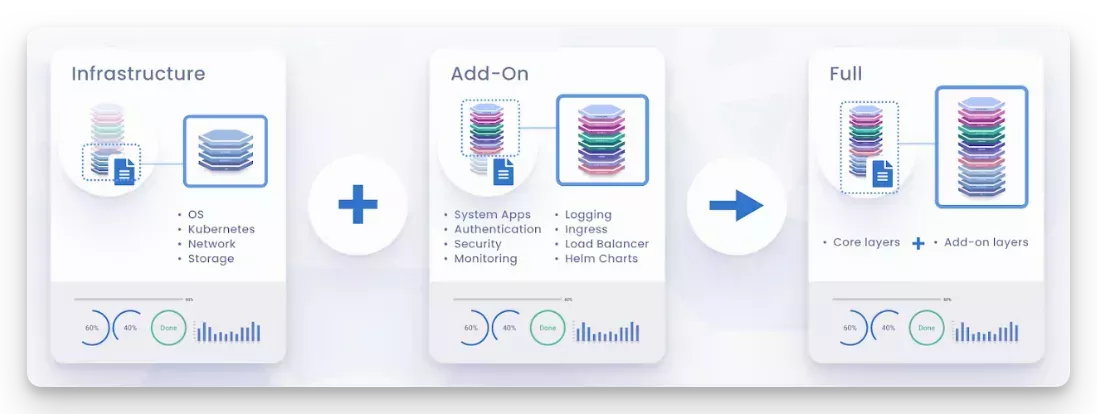Cluster Profiles
Cluster profiles are the declarative, full-stack models that Palette follows when it provisions, scales, and maintains your clusters. Cluster profiles are composed of layers using packs, Helm charts, Zarf packages, or cluster manifests to meet specific types of workloads on your Palette cluster deployments. You can create as many profiles as needed for your workloads.
Cluster profiles provide you with a repeatable deployment process for all of your development and production environments. They also give you visibility on the layers, packages and versions present on your deployed clusters.
Finally, if you want to update or maintain your deployed workloads, cluster profiles give you the flexibility to make changes to all clusters deployed with the profile by removing, swapping or adding a new layer. Palette will then reconcile the current state of your workloads with the desired state specified by the profile.
Below are cluster profile types you can create:
-
Infrastructure profiles provide the essential components for workload cluster deployments within a tenant: Operating System (OS), Kubernetes, Network, and Storage. Collectively, these layers form the infrastructure for your cluster.
-
Add-on profiles are exclusively composed of add-on layers. They usually do not contain infrastructure components and are instead designed for reusability across multiple clusters and multiple projects within a tenant. Since they provide the flexibility to configure clusters based on specific requirements, add-on profiles can be added to infrastructure profiles to create what we call a full profile.
-
Full profiles combine infrastructure packs with add-on layers. By adding layers, you can enhance cluster functionality. For example, you might add system apps, authentication, monitoring, ingress, load balancers, and more to your cluster.
The diagram below illustrates the components of these profile types and how you can build on infrastructure layers with add-on layers to create a full cluster profile. You can also create separate add-on profiles to reuse among multiple clusters.

Packs
Packs are the smallest component of a cluster profile. Each layer of a cluster profile is made up of a specific pack. Palette provides packs that are tailored for specific uses to support the core infrastructure a cluster needs. You can also use add-on packs, or create your own custom pack to extend Kubernetes functionality.
The diagram below illustrates some of the popular technologies that you can use in your cluster profile layers. Check out the Packs List page to learn more about individual packs.
